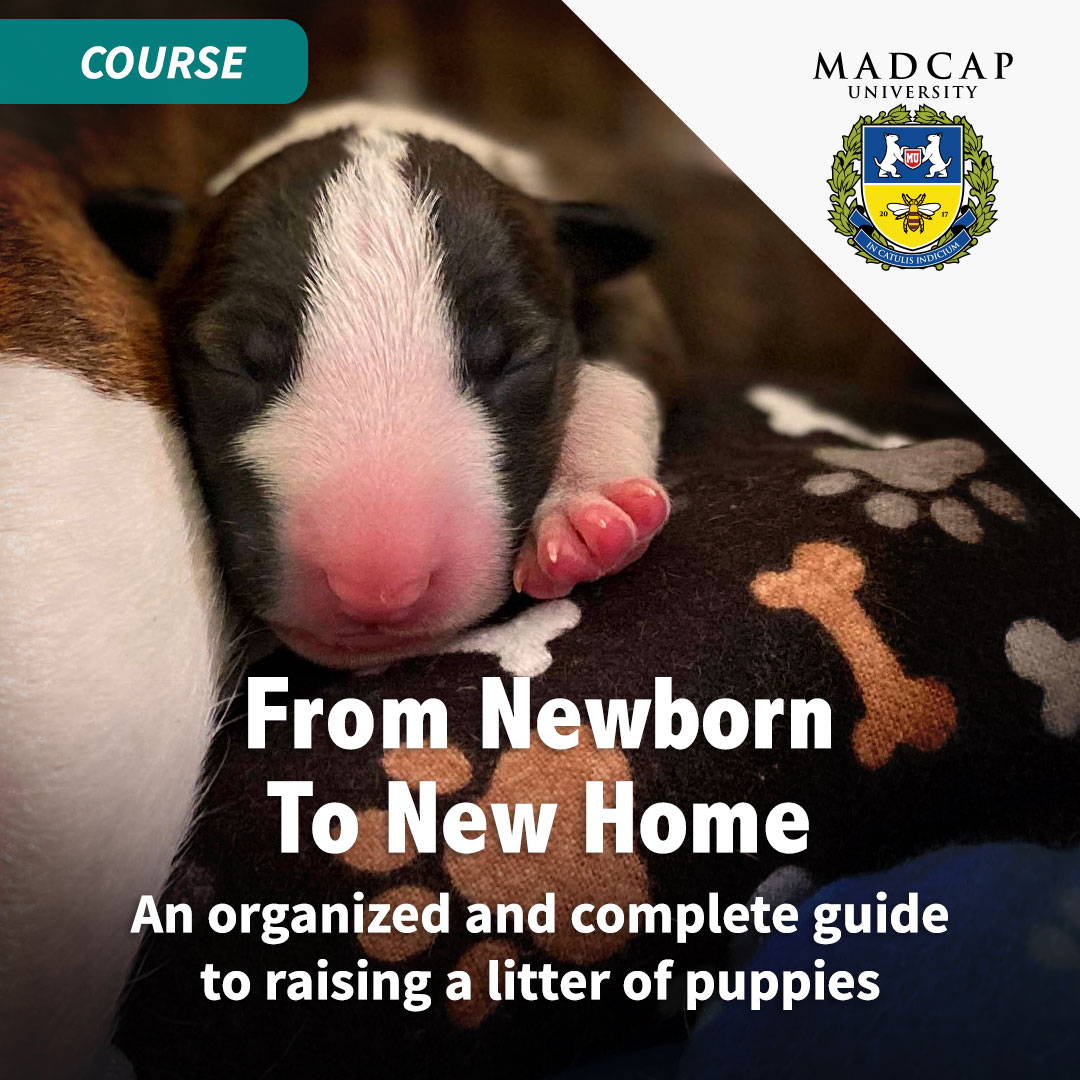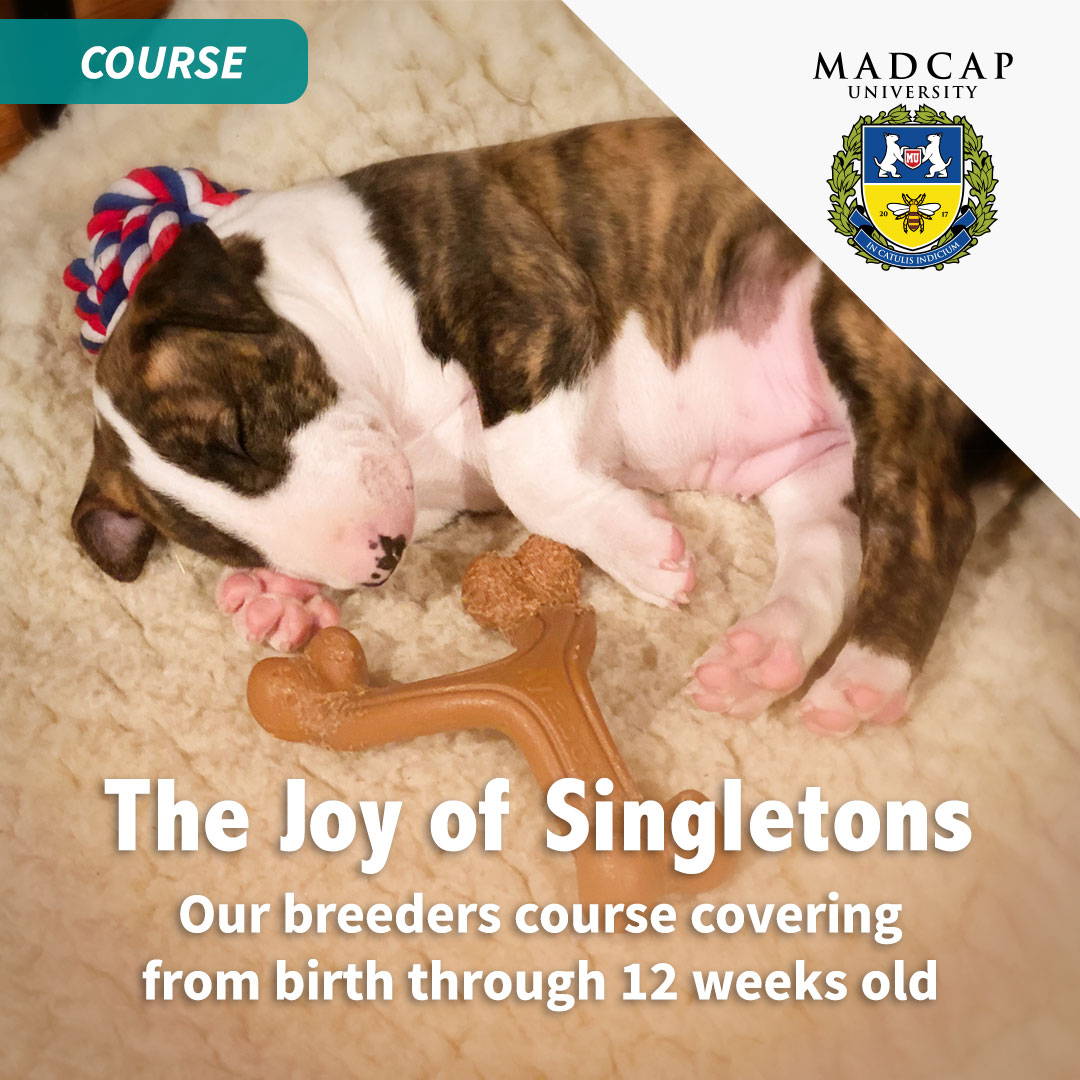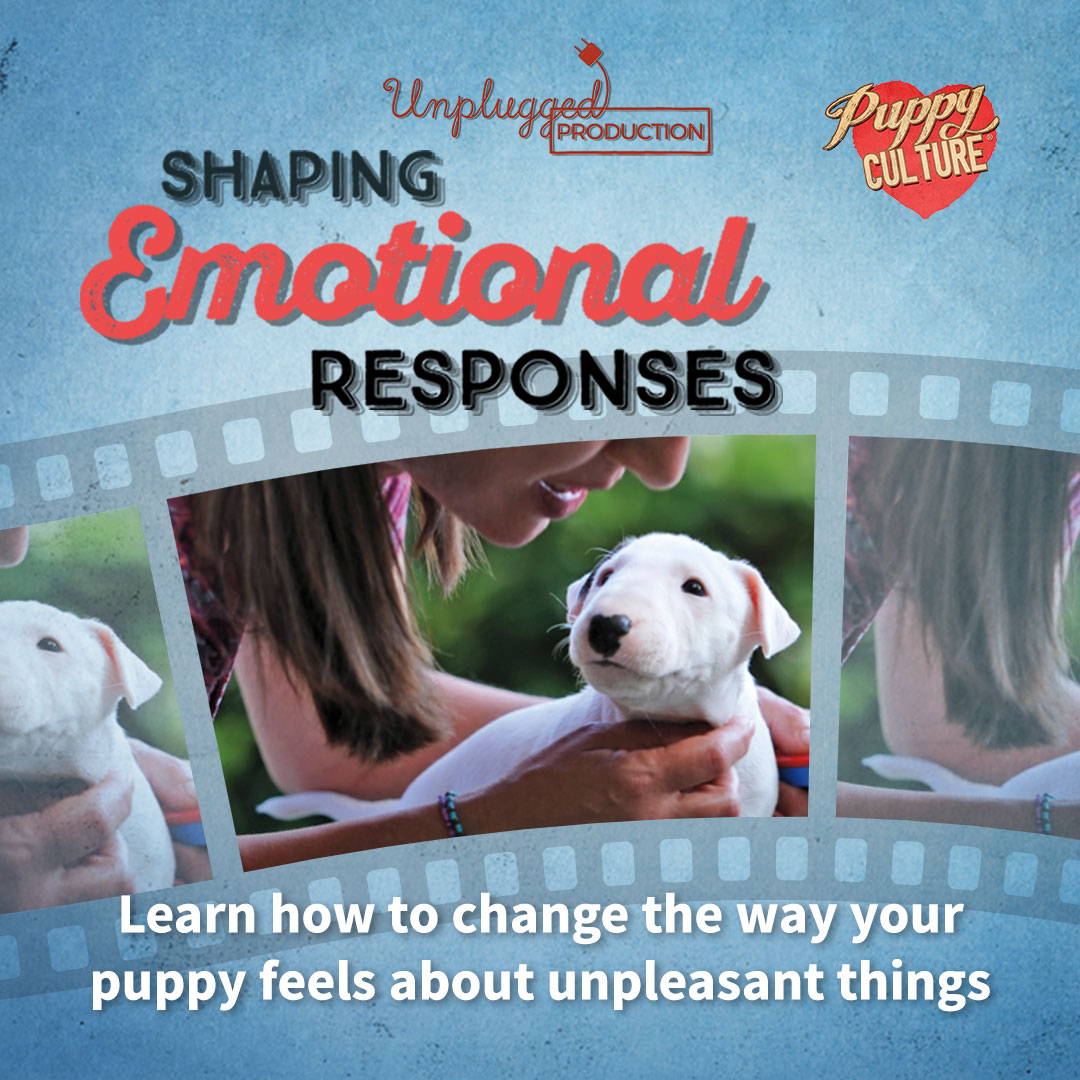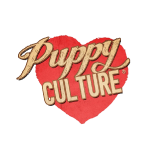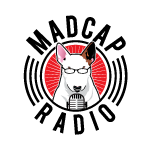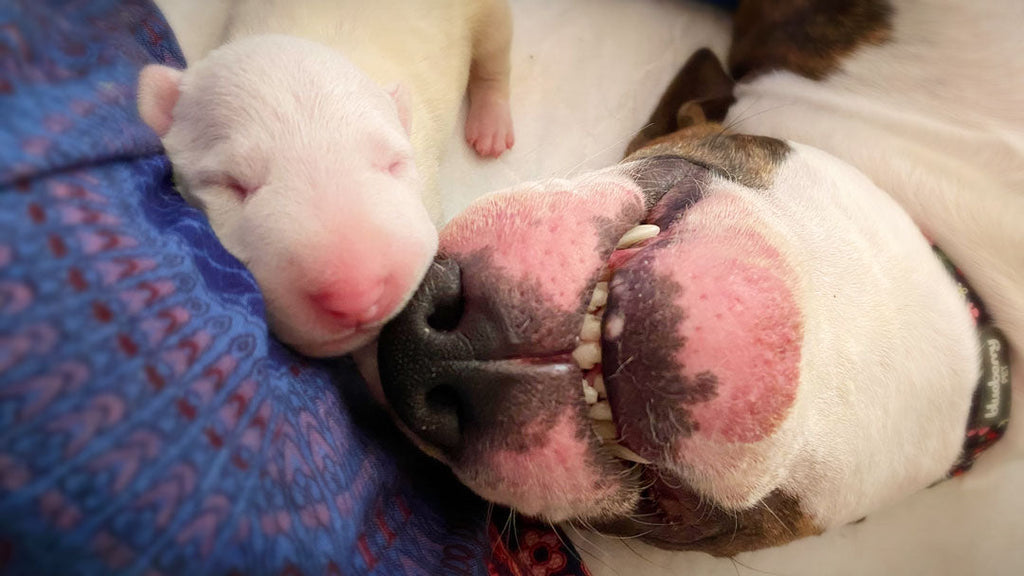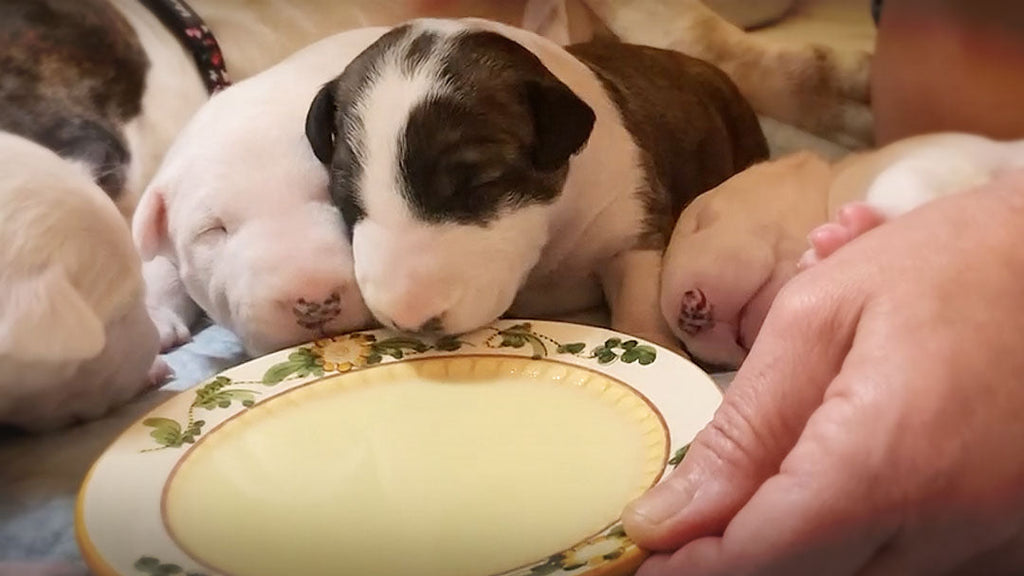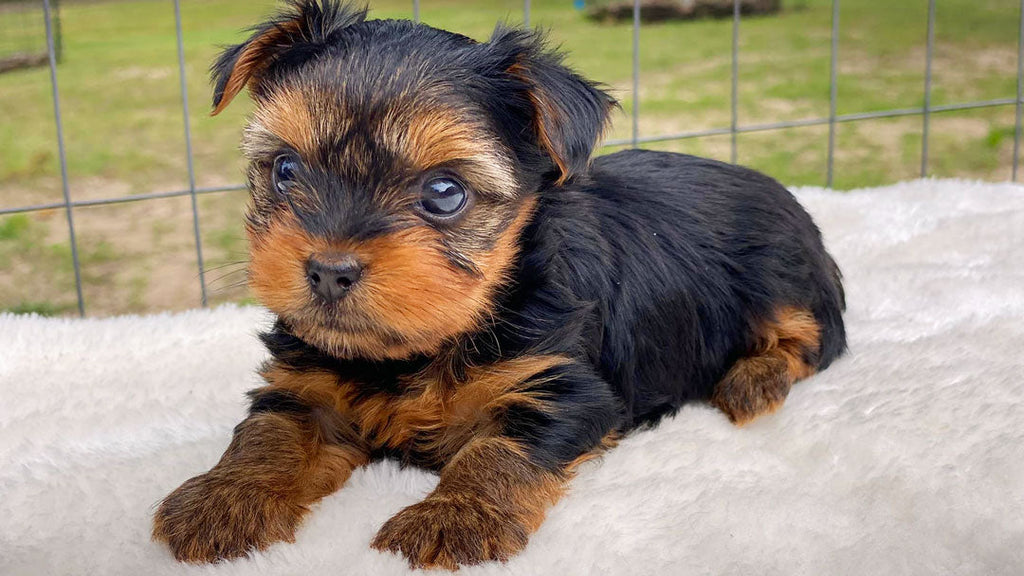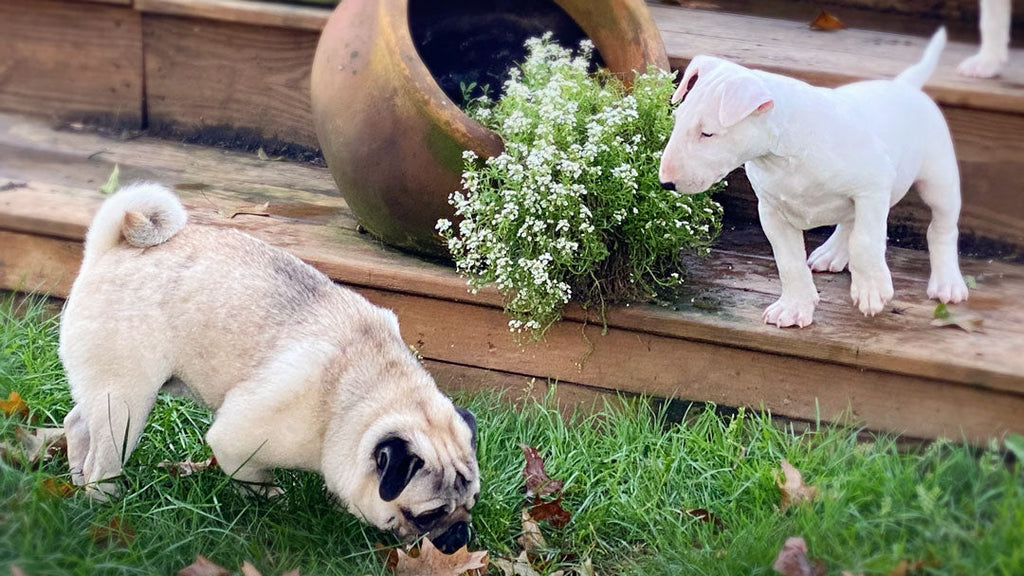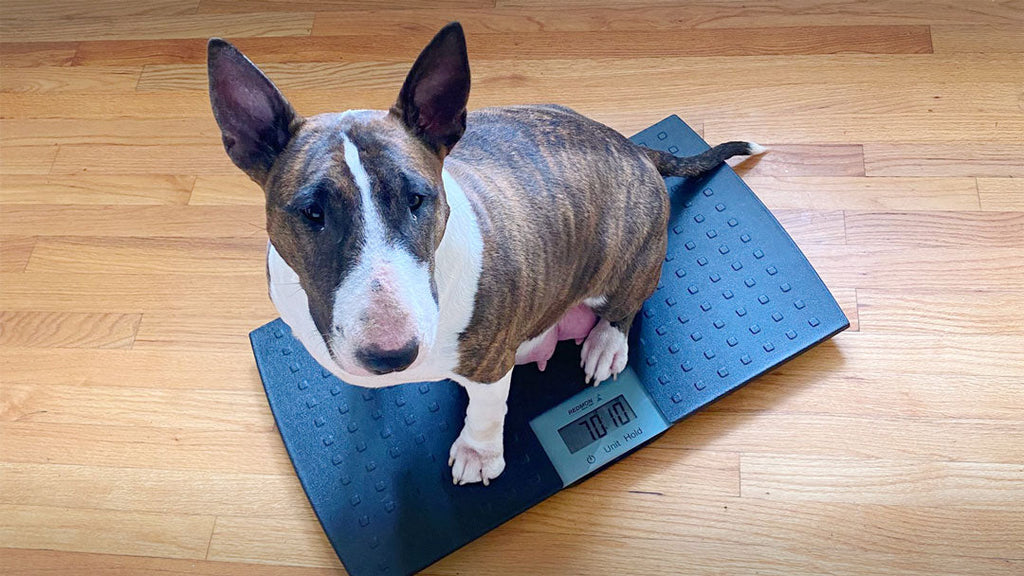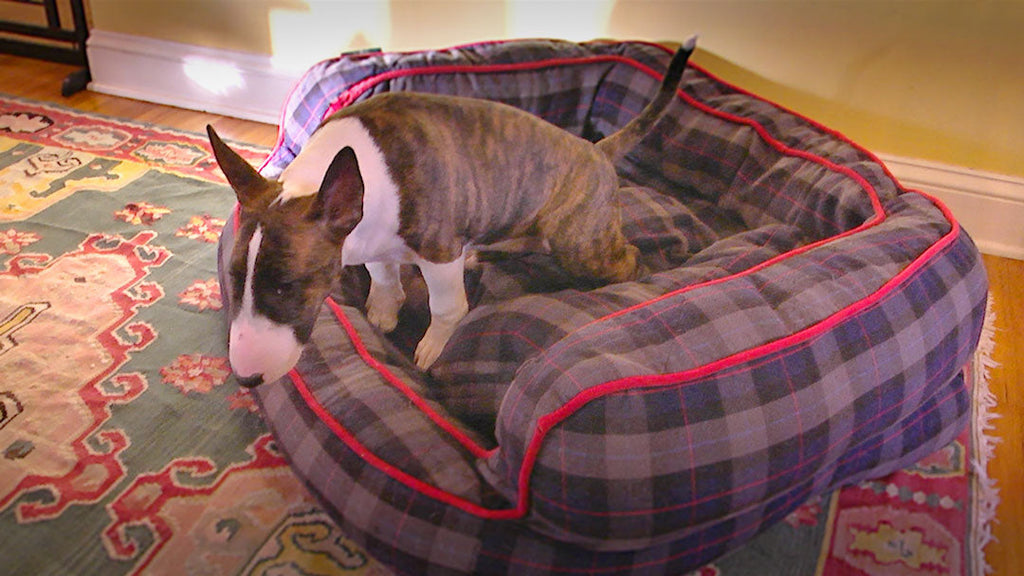Being Part Of The Solution
The Transitional Period
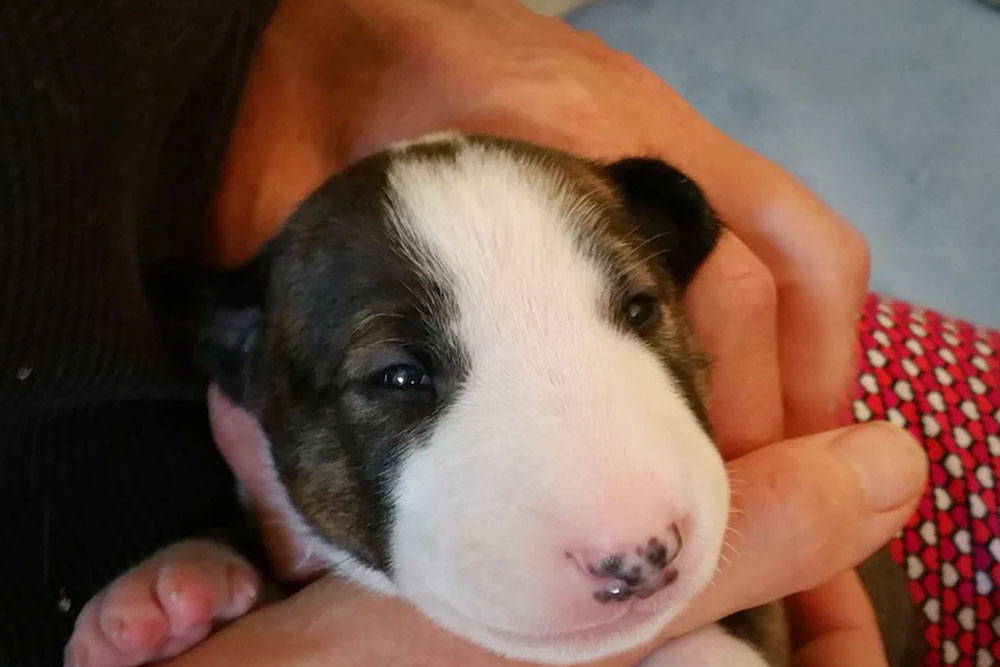
We're calling her Bijou-Bee. Those shining little eyes are like a hotline to our souls...
The first puppy opened her eyes at 12 days old. It will be a while before the puppies have useful vision, but when they start pointing their little muzzles at us and trying to focus, it's just heartbreakingly sweet. Those shining little eyes are like a hotline to our souls.
To review, the puppies' eyes and ears are sealed shut when they're born. Their eyes open first (usually at around 12-15 days old for our breed), and their ear canals usually open around 7 days later. That period, between the time that their eyes and their ears open, is known as the "transitional" period. This is because useful vision and hearing are thought to be necessary for the puppies to enter into the next developmental period, which will be the socialization period.
What's really important to know is that scientists use behavioral rather than time line markers to determine when different developmental periods begin and end. So it's the eyes opening and the startling that dictate the beginning and end of the transitional period, not "the third week of life" as those ubiquitous internet "Puppy Development" charts would lead one to believe.
This means that one puppy's transitional period might be when the puppy is from 10-21 days old, and another might be from when the puppy is 18-22 days old. I'm not kidding, it can vary that much, or more. The litter that Pippi's was born in was ridiculously slow to open their eyes - some of them had just started to open their eyes at 23 days old. I died a thousand deaths and was sure they had no eyeballs. But everyone turned out just fine :o).
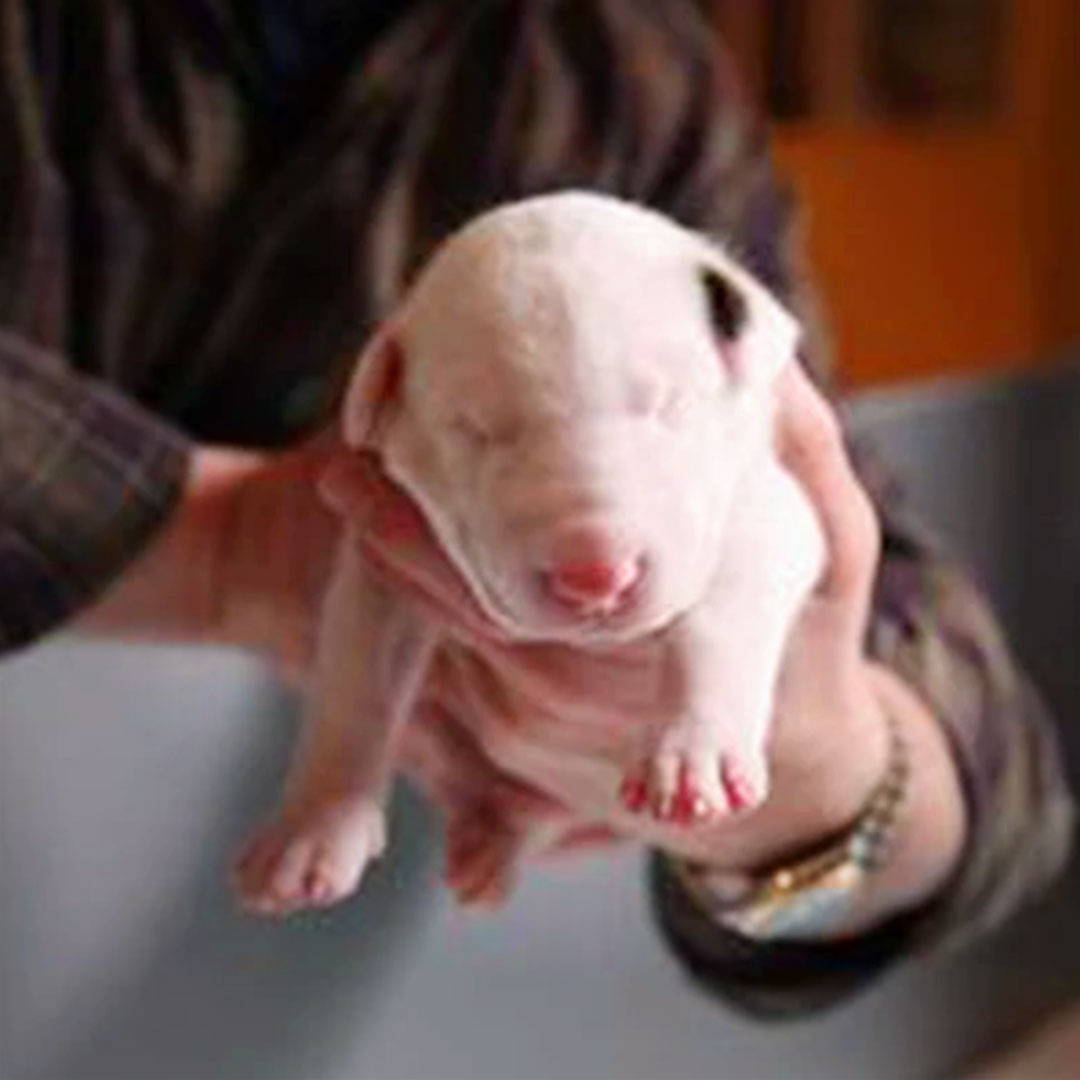
Seriously, this puppy was 23 days old in this photo. Happiest day of my life when the last one of this litter opened their eyes...In case you don't already know, no, I could not just pry their eyelids open to peek and see if there really were eyeballs in there. Those eyes are sealed shut for a reason, and that reason is that the puppies' eyes are so unformed at that point that light would permanently damage them. I just had to sweat it out.
Photo courtesy Marianne Dalton.
The takeaway here is that you do have to observe each puppy in each litter to know in what development period that particular puppy is at that moment in time. Why does it matter, you ask? Because what's extremely beneficial during one developmental period could be extremely damaging in the next, or vice versa. This is so poorly understood and the available information is scattered (and often incorrect) that it prompted us to make to make a 5 hour film on understanding puppy development periods and appropriate protocols per developmental period - Puppy Culture.
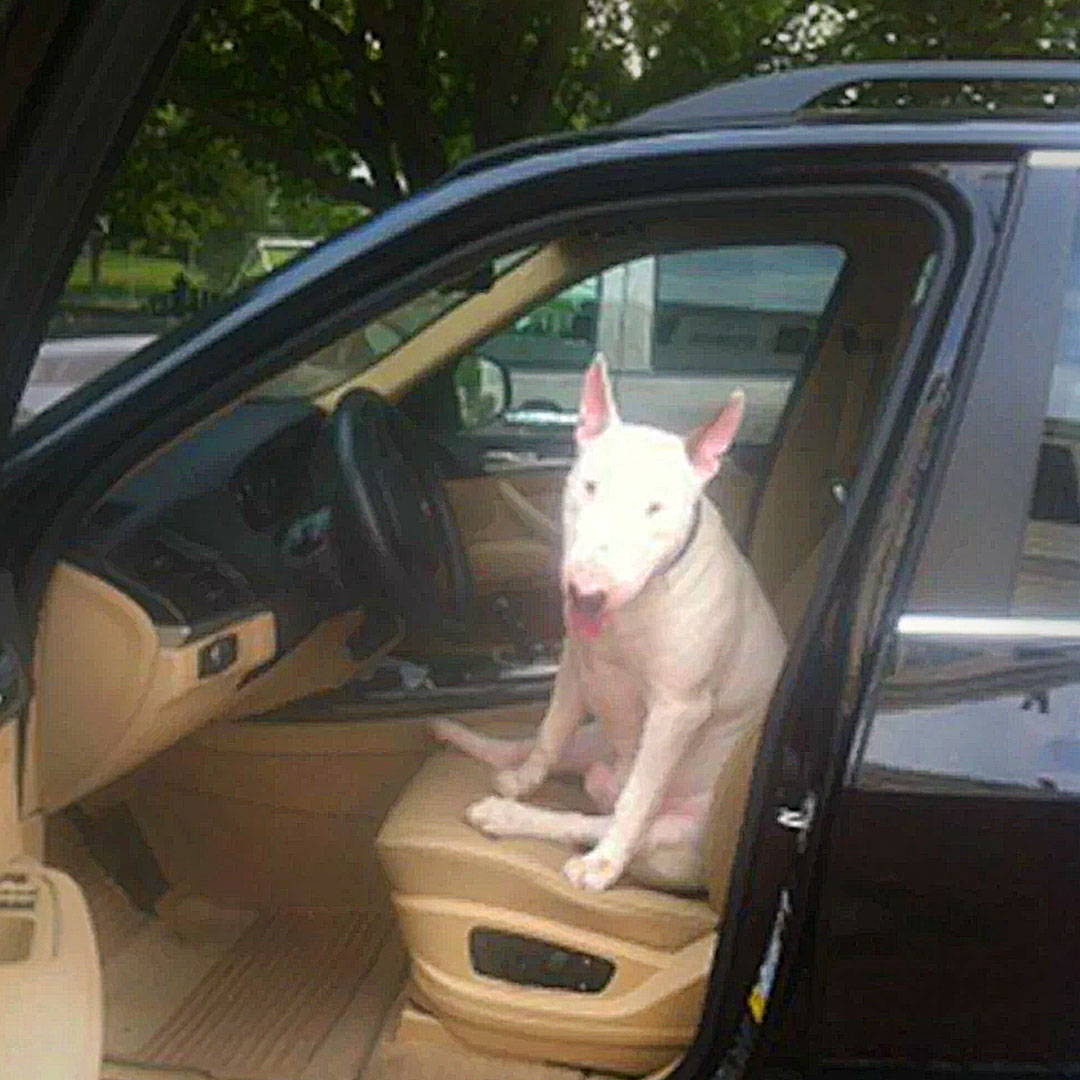
As you can see, that puppy (Henry) whose eyes were still closed at 23 days, grew up to see just fine, as did the rest of the litter. Henry's driving abilities are hindered more by his lack of thumbs than his eyesight...
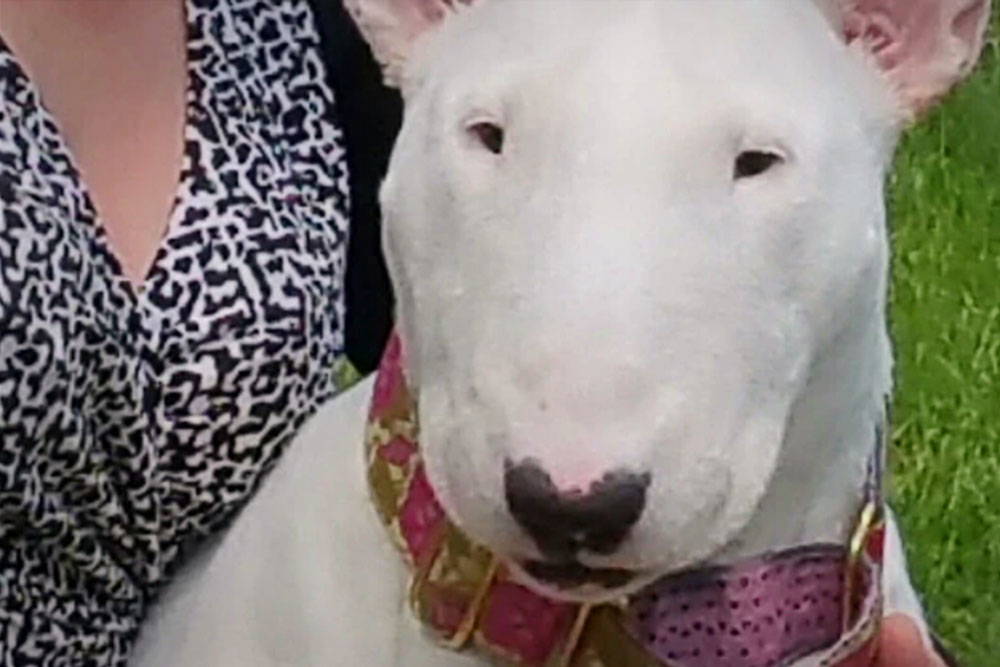
For those of you who are interested in some of the finer points of Bull Terrier type, the Bull Terrier is the only AKC breed whose standard specifies a triangular eye: the eyes should be well-sunken and as dark as possible, with a piercing glint and they should be small, triangular and obliquely placed; set near together and high up on the dog's head.
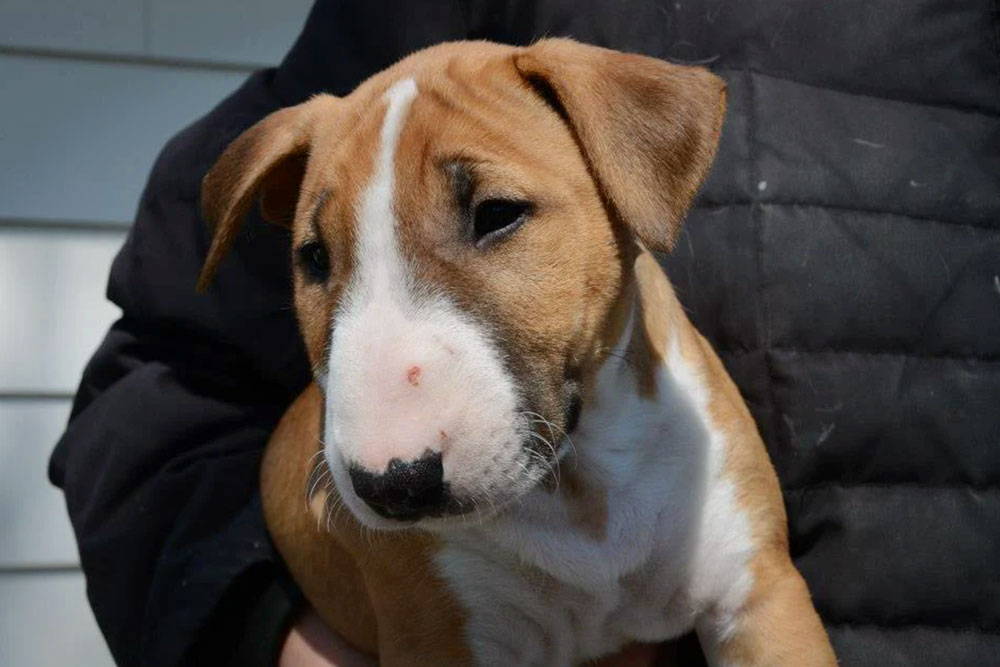
Pippi at nine weeks old - perfect triangular eye. Eyes on colored animals can be very deceiving because smut or dark pigment around the rims can give the illusion of a round eye when in fact the eye is correct. I chose this photo because the lighting very clearly shows the shape of the eye.
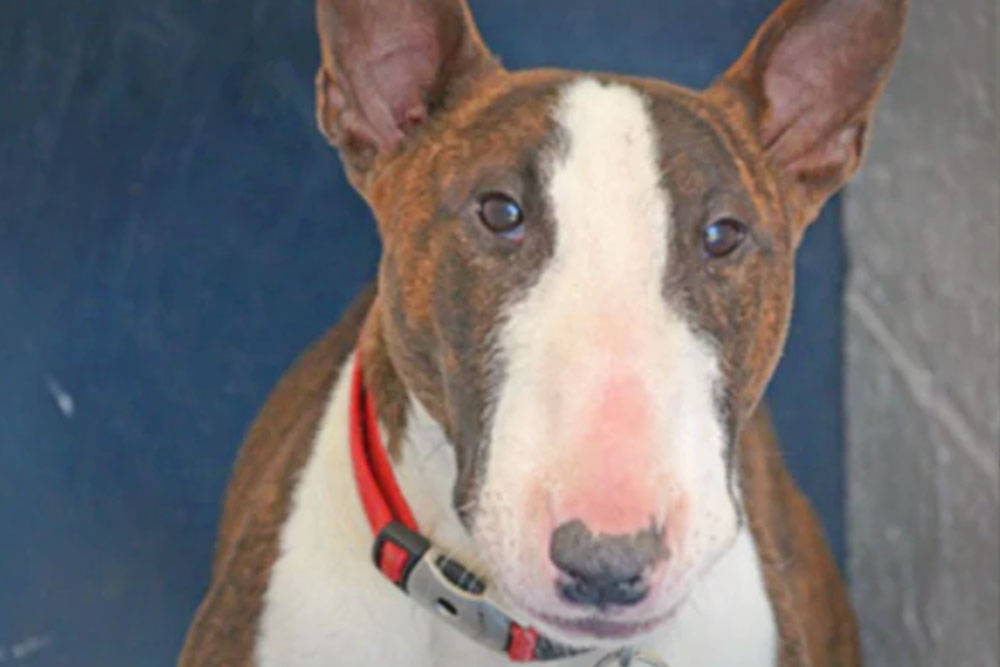
You can see by comparison that this adorable fellow has round eyes. The color is not terrible but, still, lighter than Pippi's. Ideally, the eye should look almost black. BTW, this is a rescue dog from the BTCA website - his eyes are a long way from his heart and there are many more like him looking for great homes - go to the Facebook and visit the Rescue Welfare Trust Fund of The Bull Terrier Club of America to see all the available darlings looking for homes! And when you're done looking there, check out Glenna Wright's Facebook page, 'cause she's got seven rescue Bull Terriers under her roof looking for homes. And she's bred scores of champions, ROM champions, and two Silverwood winners, she's got a litter of her own on the ground right now, and she and her husband still find the time to foster seven rescue dogs. There's a special place in heaven for Glenna.
While the socialization period for these puppies will not officially begin until later this week, the puppies are already responding to our touch and showing a desire for human contact.
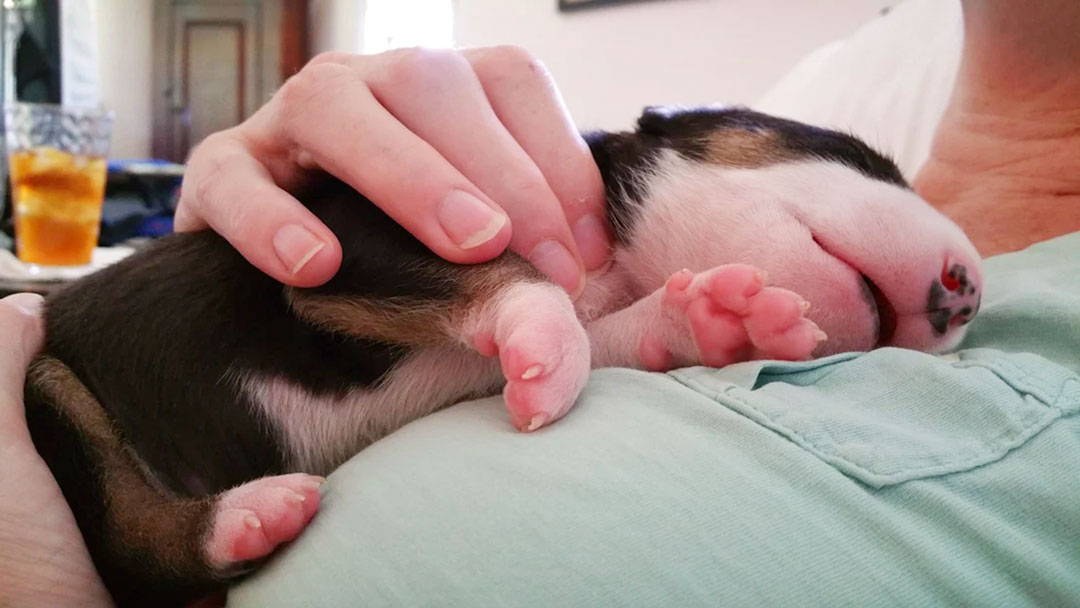
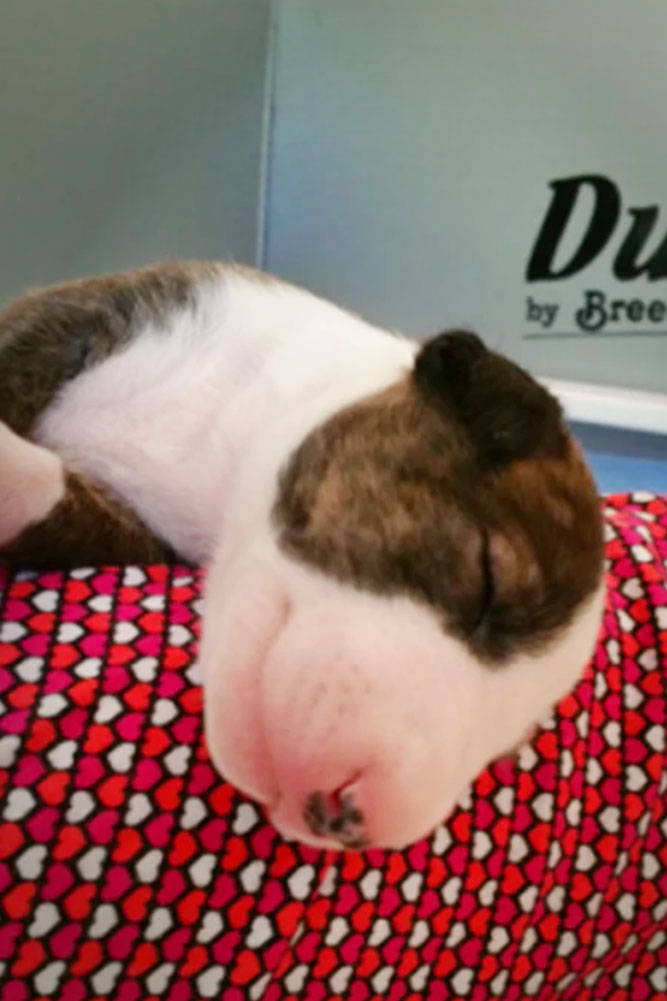
They crawl onto us when we sit in the whelping box and give every appearance of loving their individual daily massages. Are we just oversized heating pads or is this the beginning of an emotional attachment to humans? It's hard to say, but certainly some of them are already showing a preference for cuddling with us rather than lying next to their mother or on a heating pad.
Pippi still wants to nurse them and clean them, but she's really done with them after a few minutes. She's not sleeping in the whelping box with them as much as she used to, and appears to be regulating their intake. Thus it was a development heartily welcomed by everyone in the household, both dog and human, when the puppies began lapping liquids on Monday night. It means that we'll soon be able to space out nursing much more and won't need to man the whelping box 24/7.
The whole weaning process varies so much from litter to litter and breed to breed, that it's difficult to give one "procedure" for weaning litters. For what it's worth, this is how we do it. We feed our moms goat milk and mother's pudding (clickHEREfor more information about mother's pudding) in the whelping box, and the puppies tell us when they are ready to start lapping liquids by jumping in and helping themselves.
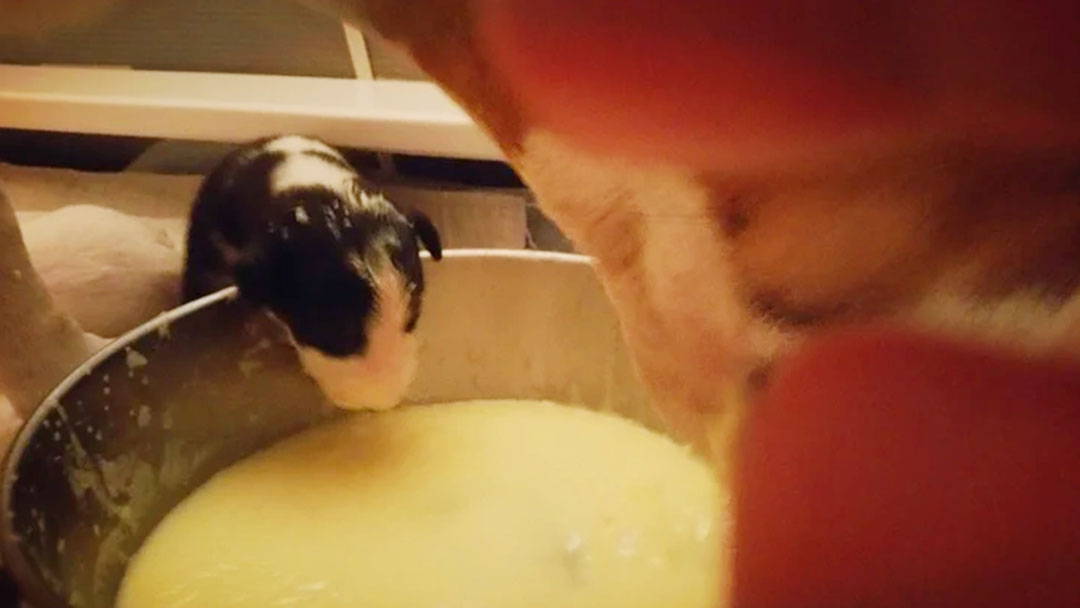
Catfish was the first to jump in...
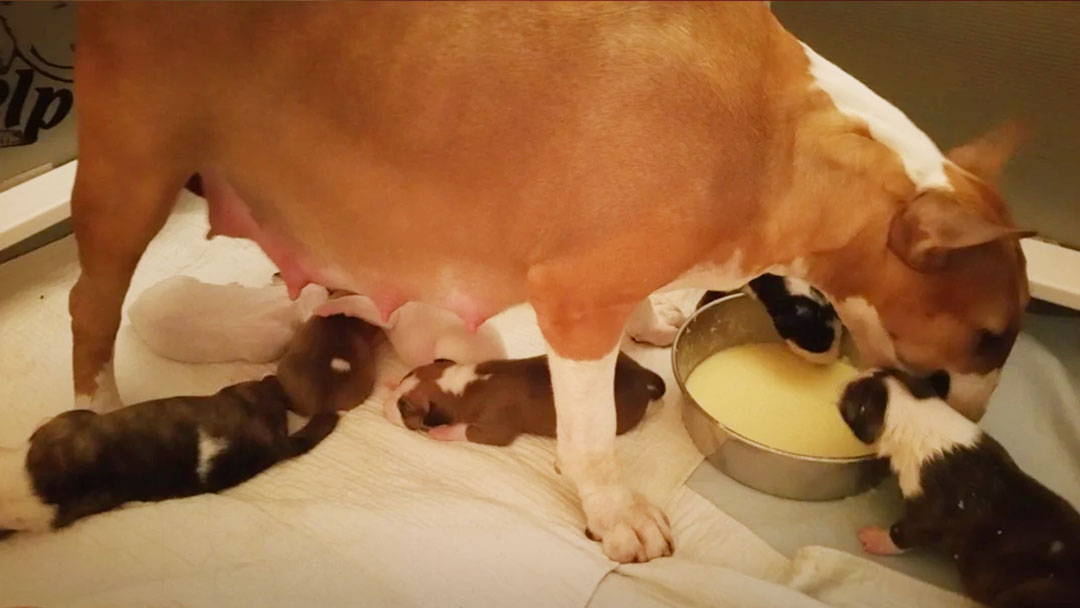
...and then the rest of the litter followed.
This litter has been snagging mom's food before their eyes were even open - they jumped into her dish of pudding at 14 days old. I do not recommend giving 14 day old puppies mother's pudding - it's way too rich with too much sugar plus cornstarch, which is not what I would start a baby with. We let them have a little fun and then took the bowl away, and we have not fed Pippi in the whelping box since. But the point is that we knew the puppies were ready to lap liquids from that moment, so we moved ahead with introducing goat milk to them.
Because they're so young, we've been taking it really slowly and only giving them a tiny bit of goat milk in the bottom of a pyrex pie plate, just to get them used to lapping liquids. I feel it's an aspiration hazard to give them liquids before their eyes open so we just coat the bottom of the plate with milk - maybe 1/8 inch. But from here on in we'll present a little dish of goat milk for a few minutes before each feeding. By a week from now we'll have them doing goat milk meals to completely replace a feeding or two each day.
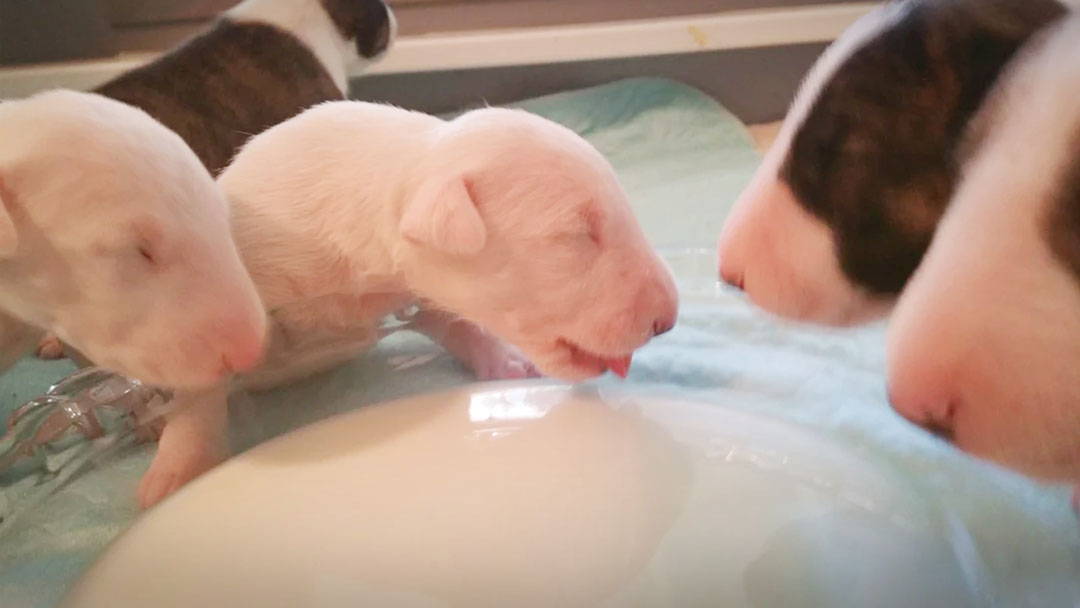
Here they are, going to town on the milk. Of course, there had to be drama associated with this. Note that Bijou Bee in the background is using her new-found eyesight to look for her mother instead of joining the others at the milk dish. She's making loud complaining noises as she pointedly ignores the milk.
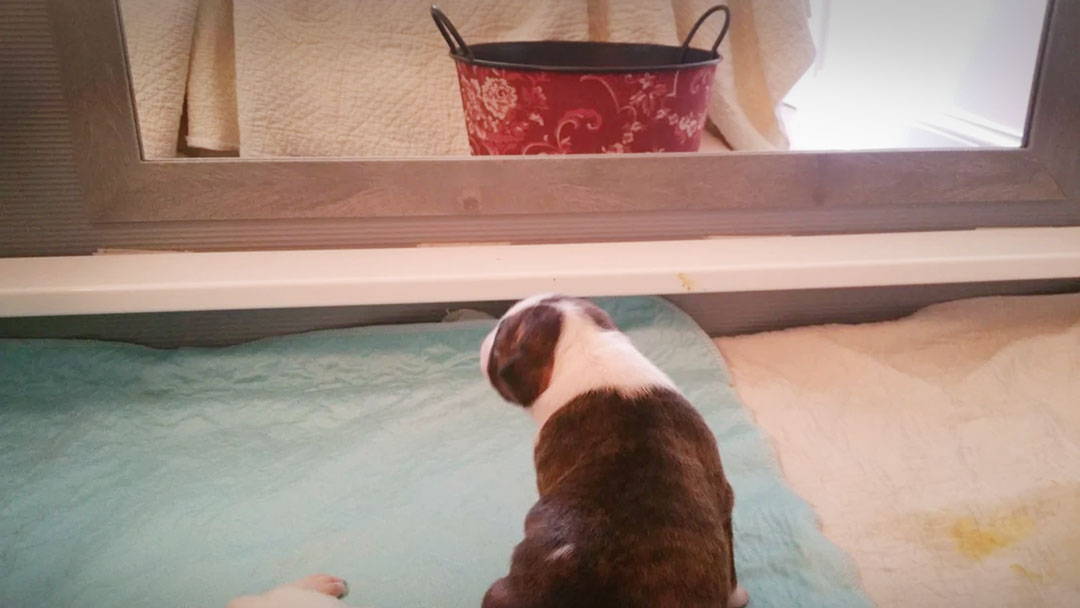
MOM????!!! I'm dyin' in here!
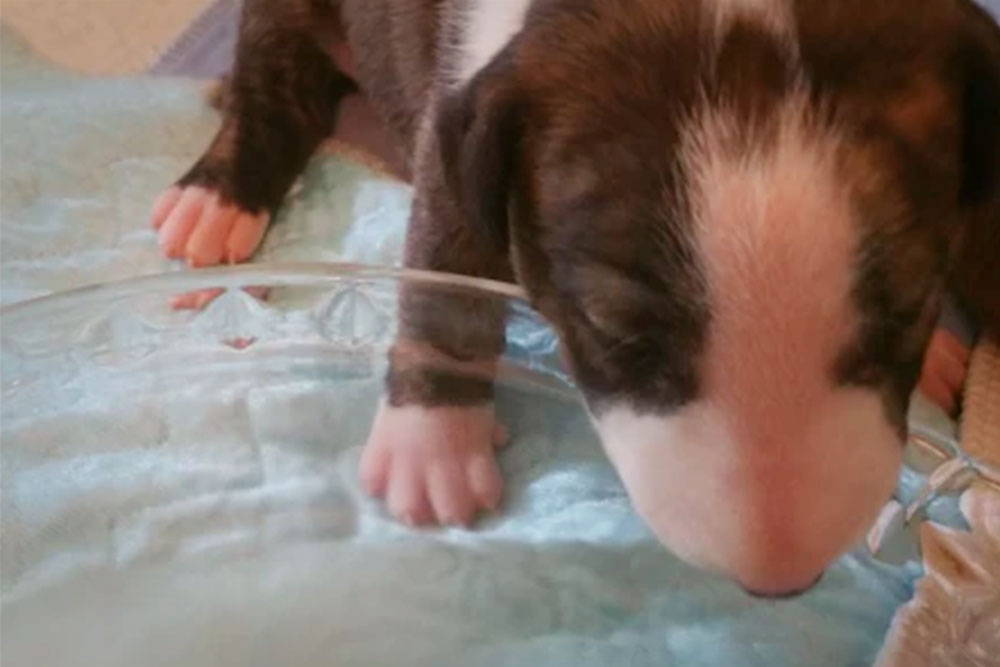
After immense amounts of complaining, she dains to try the milk, still whining pitifully the entire time.
I guess Bijou Bee didn't like the milk, and I guess she was annoyed that everyone else was having a good time eating because, after a couple of perfunctory licks at the bowl, she did this, still whining pitifully the entire time. We call this move the "Dog In The Manger" - "If I can't enjoy it, neither can you." Note that our tiniest girl, Mina, is not deterred by the fact that her walrus-like sister is sitting on her head. Go far and prosper, little one.
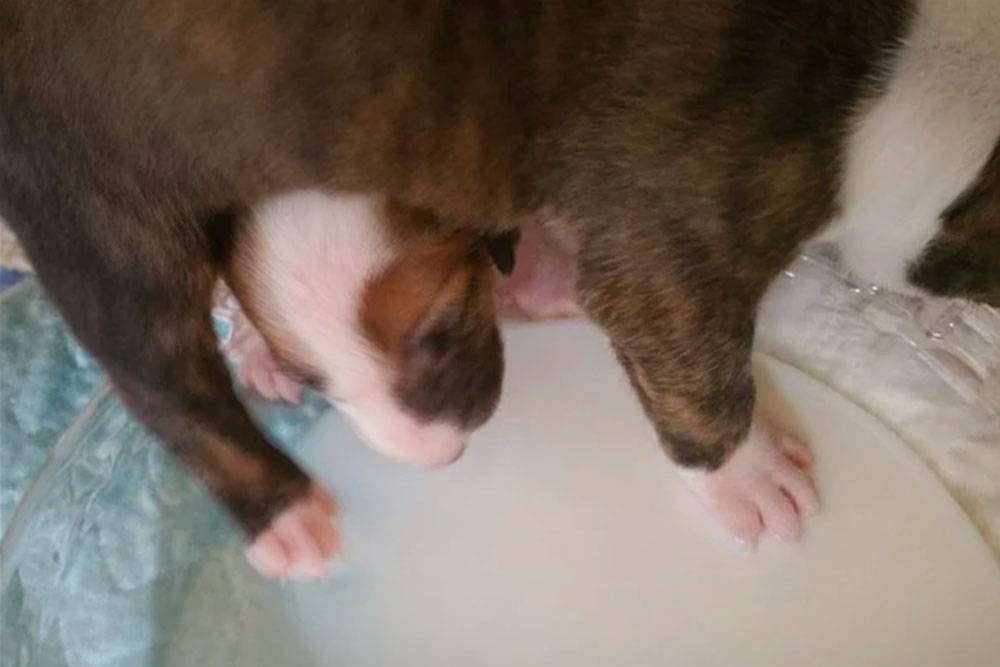
I guess Bijou Bee didn't like the milk, and I guess she was annoyed that everyone else was having a good time eating because, after a couple of perfunctory licks at the bowl, she did this, still whining pitifully the entire time. We call this move the "Dog In The Manger" - "If I can't enjoy it, neither can you." Note that our tiniest girl, Mina, is not deterred by the fact that her walrus-like sister is sitting on her head. Go far and prosper, little one.
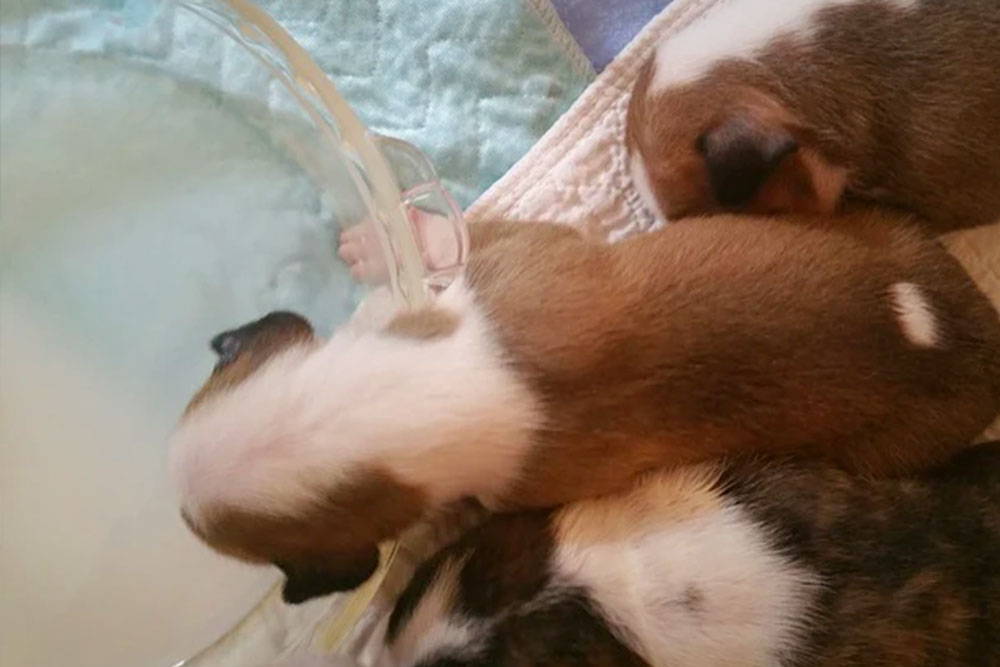
Speaking of Mina, this is a big milestone for her and a big weight off our shoulders. She'll now have the opportunity to eat as much as she wants without having to fight the bigger puppies, and we won't have to be constantly watching out for her to make sure she's getting a good turn on a good teat. You'll see her gain by leaps and bounds over the coming weeks.
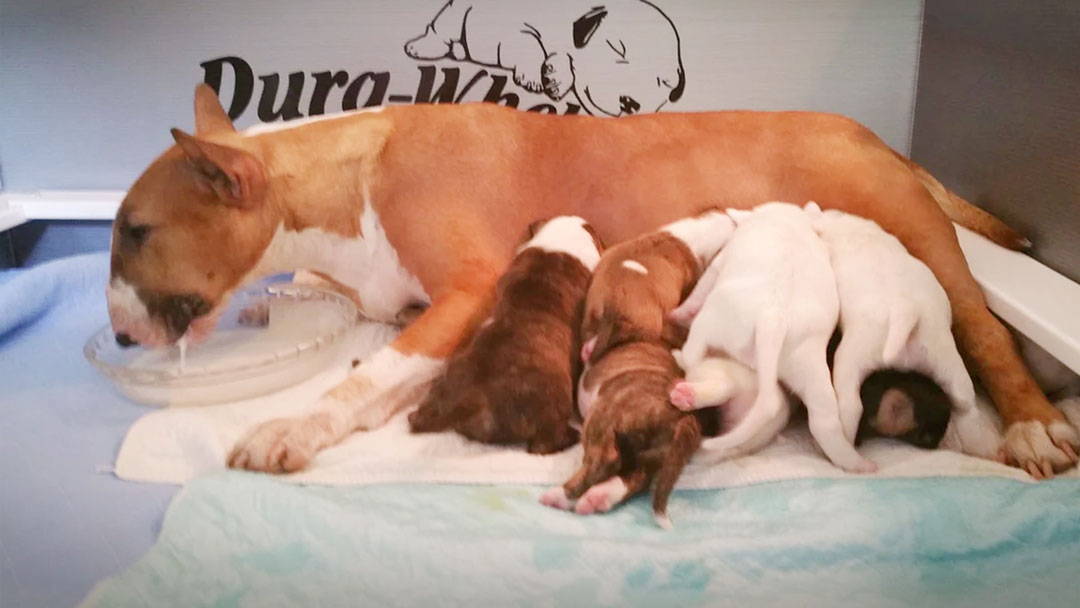
And them mom comes in to clean up. That giant thing to the left that's almost as big as all the other puppies put together is Bijou Bee, happy at last.
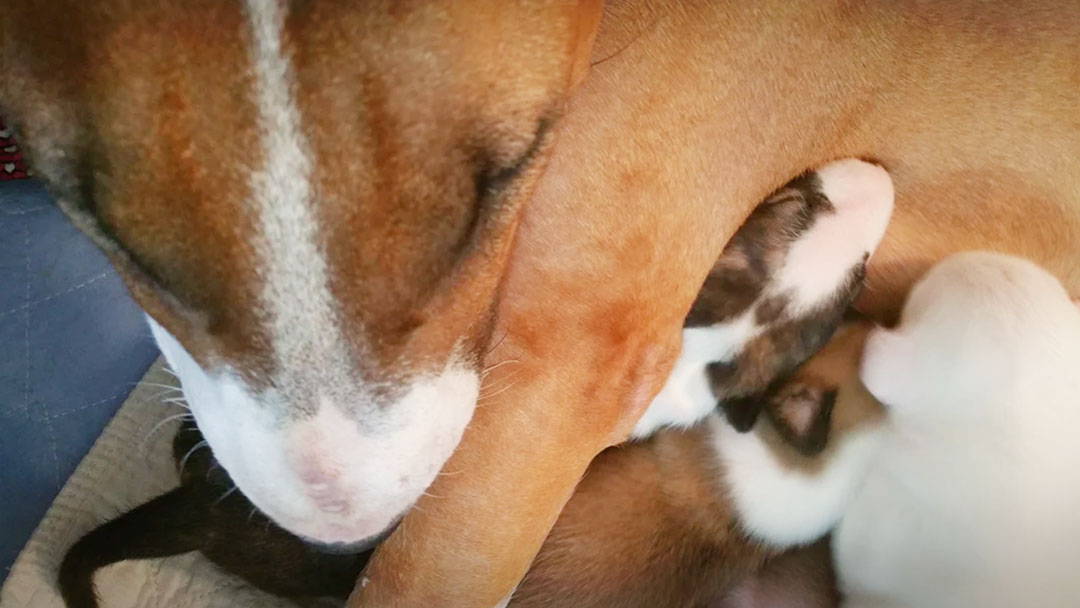
Mommy, thank goodness you got here - they wanted me to drink milk from a DISH!
While our hearts go out to Bijou Bee as she has a come apart over her first-world problems, we all know her future is assured. We can enjoy her little drama because we have the long view of her life. If Mark and I have any breath left in our bodies, she'll know nothing but love, acceptance, and security for the rest of her days. But not every dog is so lucky. So now I'm going to pull on your heartstrings a little.
As dedicated breeders, we're the solution, not the problem. We put quality pets into the world and stand by them from whelping box to grave. Our puppy owners become our families, and we educate people on why they should buy a dog from a caring breeder and not a pet store, puppy mill, or careless breeder.
We're changing things every day, and people are learning more and more about the value of getting a well-socialized puppy from a good breeder or foster/rescue organization. But the reality is that there are lots of people who should not have a dog. And after you spend an hour of your precious time explaining to them why they shouldn't have a dog, they're going to go to someone else and get one. They'll go to one of the many unscrupulous sources churning out dogs to supply those consumers who think they deserve to have a dog because they want it and want it now. And once those puppies are out the door, that's it. When it doesn't work out, there's no loving breeder to go back to. The lucky ones get dumped into rescue or a shelter. The unlucky ones get tied to a tree, locked in an empty apartment to starve, dropped on the street, or other things that are so much worse I can't even bear to talk about them here.
These dogs that are caught in the crosshairs of human selfishness and indifference are real dogs who deserve love just as much as any other dog. So it becomes the responsible breeders, who have lovingly placed and kept tabs on all of their own puppies, who wind up stepping in with rescue to clean up the mess. Because at the end of the day, we do what we do for the love of the dogs and our breed, and we care for every one of them, whether we bred them or not.
There are lots of other great organizations and I don't mean to leave any out by mentioning these three - they just happen to be three that I have worked with and try to support.
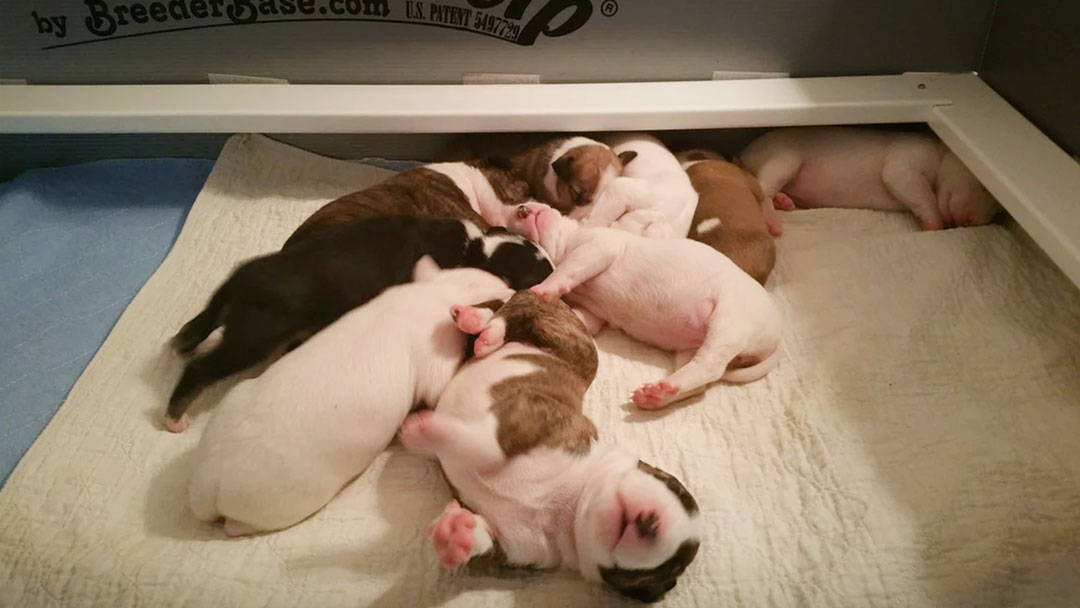
Sweet dreams, young royals!

This article was originally updated on puppyculture.com in 2015
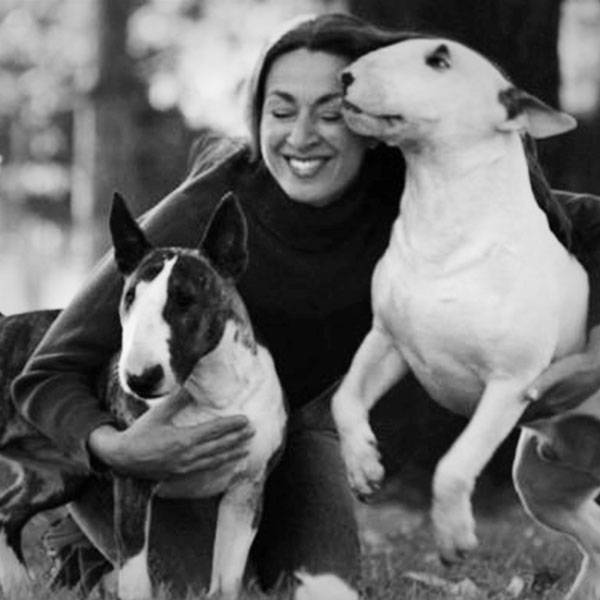
About the Author
Jane Messineo Lindquist (Killion) is the director of "Puppy Culture the Powerful First Twelve Weeks That Can Shape Your Puppies' Future" as well as the author of "When Pigs Fly: Training Success With Impossible Dogs" and founder of Madcap University.
Jane has had Bull Terriers since 1982 and she and her husband, Mark Lindquist, breed Bull Terriers under the Madcap kennel name.
Her interests include dog shows, dog agility, gardening, and any cocktail that involves an infused simple syrup.

